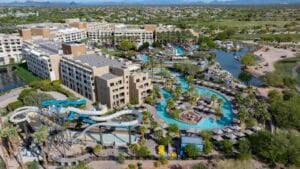The outlook for the industrial real estate market remains bright, despite rising interest rates and the growth of new industrial space being developed, according to the latest NAIOP Industrial Space Demand Forecast, released today. Low vacancy rates will continue to support growth in rents and property values.
READ MORE: Phoenix among Top 10 markets for industrial leases in 2022
The current forecast has been revised upward from August 2022 to account for the resilient economy and revised historical net absorption data.
Net absorption of industrial space in the last two quarters of 2022 was 176.1 million square feet, down from 236.4 million square feet in the first two quarters of the year. Given current economic conditions and recent demand trends, the authors estimate in the industrial space outlook that quarterly net absorption of industrial space will average 79.0 million square feet over the next two years.
Total net absorption for 2023 is forecast to be approximately 310 million square feet, and full-year absorption in 2024 is forecast to be around 323 million square feet.
The report’s authors, Hany Guirguis, Ph.D., Professor, Economics and Finance, Manhattan College and
Michael J. Seiler, DBA, J.E. Zollinger Professor of Real Estate & Finance, College of William & Mary, cited several factors contributing to the forecast:
• The Federal Reserve has increased interest rates at each of its last eight meetings. While rising interest rates have increased the cost of borrowing, the supply of industrial real estate continues to lag demand. The net result is a continued trend of higher rents and higher property prices.
• Supply chain issues that hindered the delivery of construction materials through western ports have been mostly resolved, but demand for industrial space around these ports continues to exceed supply, contributing to demand for space in inland markets.
• The shortage of space along the West Coast is also contributing to strong markets for industrial space on the East Coast as more supply chains are rerouted through eastern ports.
• Demand for e-commerce is expected to grow as consumers continue to expect quick home delivery and traditional retailers increasingly adopt omnichannel distribution. These trends should continue to create demand for last-mile distribution facilities, particularly near dense and growing areas.
“We had been expecting a more severe slowdown in the industrial sector, but conditions remain stronger than anticipated,” said NAIOP President and CEO Marc Selvitelli, CAE. “We are pleased that the sector remains strong as supply chain issues are being resolved and the consumer trend toward online retailing shows no signs of returning to pre-pandemic levels.”
Download the full NAIOP Industrial Space Demand Forecast, at https://www.naiop.org/industrialdemand




